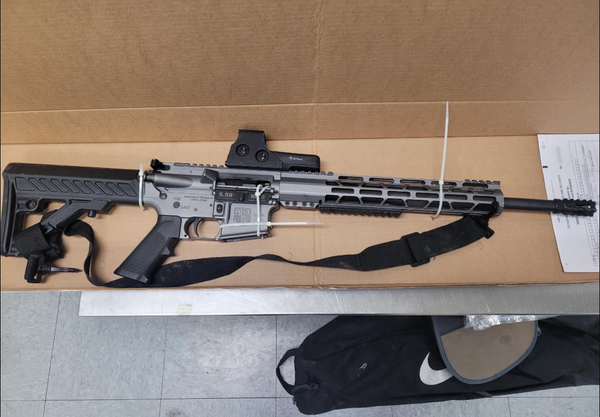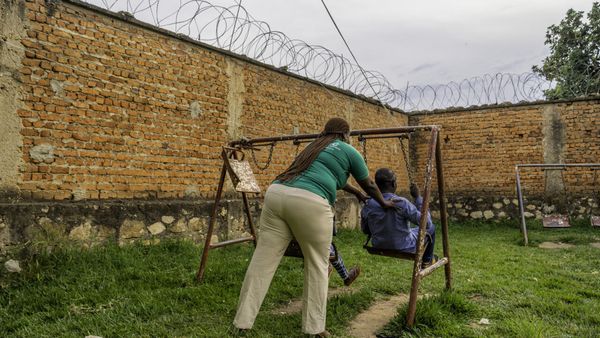
One of the first screens you see in Silent Hill f is a smorgasbord of content warnings. And while I largely consider myself to have a pretty high threshold, those warnings should be heeded, as Silent Hill f has one of the most singularly gruesome moments I’ve ever seen in a video game.
But that gruesome moment isn’t even what I ultimately took away with me from my Silent Hill f experience. A lot of the gore and guts are simply built into the narrative, to reinforce a lot of the game’s themes on body image and identity. Nothing in this game is there simply for shock value, it’s there for a reason.
In Silent Hill f, an eerie atmosphere and phenomenal sense of place interweave with methodical combat and survival elements that manage to feel both modern and nostalgically crunchy. But the game’s biggest achievement, by far, is its heady, twisting story that challenges players, both to figure out its eccentricities and sit with some seriously heavy themes – heavy criticism of gender roles, societal pressure, mental illness, parental abuse, and how religious custom can get twisted over time. There’s a lot happening in Silent Hill f, but the game manages to wrap it all into one tightly executed package that sits with you long after the credits roll. It’s a game that manages to honor the series’ legacy, while simultaneously pushing it in a new direction, and it might just be the best Silent Hill to date.
Into the Unknown
While Silent Hill f does contain similar themes and ideas to the rest of the series, story-wise, it’s entirely its own thing. Up until now the franchise has taken place entirely in America, but Silent Hill f transports things to a sleepy Japanese mountain town called Ebisugaoka, in the 1960s. And this is as much a period piece as it is working with the contemporary horror genre, clearly and heavily inspired by societal issues of Japan’s Showa Era – something the game’s writer has already talked about in interviews.
And it is important to talk about who wrote this story, a creator that’s gained a sort of mythic reputation in a lot of circles through his work on the Higurashi When They Cry series. The psychological anime series has become beloved for its horrific slant, and similar commentary on gender roles. Notably, before breaking into a career as a writer, Ryukishi07 did work as a social worker, within Japan’s child welfare system. I genuinely think that’s important context to have for this game, because Ryukishi’s life and experience have clearly molded this story in a variety of ways.

In Silent Hill f, you play as a high school student named Hinako Shimizu, a quiet girl who’s never fit in with her peers. Hinako’s home life is also wracked with strife, including an abusive alcoholic father. After an especially frustrating argument, Hinako heads into the small town to find someone to talk to. She stumbles into her friends, just moments before the town is gripped by a supernatural fog and a deadly “fog monster.” From there Hinako has to figure out what’s happening and fight off horrific creatures, as she explores both the town of Ebisugaoka and a mysterious supernatural otherworld.
The first thing that jumps off the screen about Silent Hill f is its fantastic sense of place, a stunning recreation of 1960s Japan, steeped in culture. This is a uniquely Japanese game in every way, and I don’t mean just by its design sensibilities, but right down to authentic music from series composer Akira Yamaoka, and period appropriate outfits, ads, postboxes, etc. Even the game’s commentary, while applicable on a worldwide scale, is clearly tuned to Japan’s history. But before I dig into the game’s themes and narrative, which is what truly gives it significance, I want to explain how its gameplay skillfully supports the narrative.
Fight For Your Life

Silent Hill f is a traditional survival horror game in every sense, although its combat is much more tuned to feel like an action game than past entries. There are essentially two parts that the game yo-yos between, an exploration of Ebisugaoka that largely focuses on combat and lore, and puzzle-heavy segments in the mysterious paranormal world.
You’ll likely hear a lot of people compare this game’s combat to Souls games, and while there are similarities, Silent Hill f is very decidedly survival horror. The only weapons you get are melee weapons, such as knives, pipes, and axes. Hinako has a light and heavy attack, and if you time a heavy attack with the perfect visual cue, what looks like a pulse around the enemy’s body, you can do a counterattack to stagger them. On top of your health and stamina, Hinako has a “sanity” meter that indicates your ability to focus (which affects how well you can see the pulse). When sanity runs out, your health will drain to zero constantly. To that end, you’ll need to collect and budget various items that can restore both your health and sanity, and the game cleverly treads the line of constantly making you worry about having enough items, but still giving you just the bare minimum to get by.
While Silent Hill f’s combat isn’t the most flashy or complex, I actually think it serves its purpose well. Almost every fight truly does feel like a struggle for your life, and it’s quite easy for even a basic enemy to cut you down if you get careless. There are also some truly wild surprises introduced to combat at multiple points during the game, that completely change how you approach it. I genuinely can’t say more without massively spoiling parts of the story, but suffice it to say, Silent Hill f does a good job of shaking things up across its entire 10-12 hour runtime. The visceral feeling of combat often feels intentionally designed to capture the rage that lies within Hinako, giving context for the emotions she, narratively, has bubbling within her. In traditional Silent Hill fashion, too, you’ll be facing some truly horrifying creatures – from a mound of porcelain dolls that doubles over to become a centipede, to twisted female mannequins that have been mangled in horrifying ways. This is a game that absolutely doesn’t hold back on nightmarish imagery.

That goes doubly for the game’s puzzles as well, which run the gamut from nice little brainteasers to you’re going to need to get out a pen and paper. These are real nitty-gritty puzzles like I haven’t seen in a survival horror game for a while, and oftentimes tie into the culture or history of Ebisugaoka as well. It helps that Silent Hill f also has a novel approach to difficulty, with two different settings for combat and puzzles.
By and large, the game also does a good job of keeping you on track with narrative cohesion, with most exploration or side content still feeding back into the overall story. Breaking off from the beaten path might help you discover notes on a local deity, or a whole subplot about a doctor struggling to help patients inflicted with bizarre diseases. Everything being in service to the narrative is important here, as it’s the game’s crowning achievement.
Breaking the Norm

What’s truly remarkable about Silent Hill f is how its narrative is an intentionally fragmented experience, meant to reinforce the confusion and psychosis present in its world. There are so many different facets and elements to this story that are essential to understanding it, and I absolutely love the way the game builds its world and mythos out.
You’ll absolutely want to read everything you come across in Silent Hill f, as this is where the bulk of the story lives, teaching you about the religion of the region, the town’s history, supernatural forces, and even societal trends of the time.
Alongside all that, Hinako herself keeps a journal of people, monsters, locations, and more. This journal isn’t just a codex to keep track of events; it doubles as an utterly vital look into Hinako’s psyche. This journal is where you can fill in the gaps, and see the difference between what’s on-screen and how Hinako remembers or interprets things. That duality is one of the most fascinating parts of this story, constantly making you question what’s really happening and what you don’t know.
The other side of all this is Hinako’s role in the story as a high school girl. I mentioned before that Silent Hill f has heavy criticism of gender roles, and that’s a big central theme of this story — it feels like this game also comments on the role Silent Hill, as a series, has played in the past in relegating female characters to stereotypes. While it’s a bit difficult to discuss without spoilers, the game is largely about agency, the right to make our own choices in life, and the sheer cruelty of forcing someone into subservience, whether on a personal or societal level.

Hinako’s turbulent family life has led to complex thoughts for her on the nature of marriage, and a core part of her struggle is fighting back against what others have dictated her life should be, or how she should act. Showa-era Japan, similarly to America at the time, was rife with messaging on how women could serve their husbands better, or be the “perfect” housewife – and you see this illustrated through magazines you can find in-game, ads for cookware or dishwashers, and more. I can see a case where some might call Silent Hill f’s story feminist, but I think more largely it’s critical on gender roles and norms as a whole, and how it’s damaging for society at large.
Through Hinako, we also get to see the multi-faceted personalities of the game’s other characters – how her friend Rinko has an almost vindictive superiority complex, or the way her best friend Shu tries to provide genuine support, but struggles to understand what Hinako is going through. There’s a relatively small cast of characters, and that helps make each one incredibly multilayered and compellingly tied into the game’s message and themes.
Perhaps the game’s biggest strength is how it interweaves these themes with more traditional, gruesome, horror. The idea of Hinako losing her freedom of choice or personality is every bit as terrifying as the ten-headed creatures you beat to death with a pipe. And that’s exactly what makes this story so impactful. It’s sat with me for days after beating the game – I’ve been thinking about it before I go to sleep at night, turning it over in my mind.

Silent Hill f succeeds, and honors the series the most, when it’s tackling personal, psychological horror. When it’s dealing with its meatiest subjects, the fact that it’s set in a brand new location and explores subjects the series hasn’t before seems to matter less. It’s a game about the horrors that we inflict on ourselves and society inflicts on us at large. Sure there are some terrifying monsters along the way, but just like so much of the best horror out there, Silent Hill f is about a deeper, creeping sense of dread – about things outside of our control.
Even the very structure of the story supports that. You aren’t going to understand what’s going on by just playing and watching the cutscenes, you need to dig deeper – and in some way, you aren’t even realizing that decisions you’re making are impacting the story. Tied to that is a surprisingly ingenious new game plus mode and multiple endings that alters and tweaks events on subsequent playthroughs. I highly recommend playing this game at least twice to get the full experience, and potentially even more than that.
A New Lease on Life

Any issues I can find with Silent Hill f pale in comparison to the sheer ambition of what the game’s trying to pull off. Do I wish the combat could be a little more complex, especially since I played the game three times? Sure. But what’s there is rock solid, and simply exploring this world and story, and piecing its fragments together, is a joy. But even outside of that, Silent Hill f is one of the most atmospheric horror games I’ve played in a long time – deeply unsettling in every way, and bolstered by its strong attention to detail. Across the game you see Hinako’s clothing fray and tear, her prim and proper appearance sullied with dirt and blood. Seeing the town slowly transform into a hellscape is riveting. I can also applaud the game’s unrelenting vision in not shying away from violence, drug use, mental illness, and a variety of other topics, but finding a meaningful, thoughtful way to talk about them.
But more than anything, I can’t stop thinking about the message of Silent Hill f, and how it feels remarkably important for this moment in time. The game’s commentary on gender roles and rigid societal ideals feels remarkably prescient, and not just for Japan. In present-day America, especially in the last few years, we’ve seen a surge in toxic masculinity, and an alarming return of what the “perfect” American family might look like.
Despite the cultural differences, Silent Hill f’s message on the danger and damage of gender norms feels important, especially with how the game plays with the context of the series at large. That alone would be a remarkable achievement, but Silent Hill f manages to succeed on nearly every other level as well – a haunting soundtrack, a historical sense of place, and gritty visceral combat. You simply couldn’t have asked for a better return of the iconic horror franchise.
10/10
Silent Hill f launches on September 25 for PS5, Xbox Series X|S, and PC. Inverse was provided a PS5 copy for this review.
INVERSE VIDEO GAME REVIEW ETHOS: Every Inverse video game review answers two questions: Is this game worth your time? Are you getting what you pay for? We have no tolerance for endless fetch quests, clunky mechanics, or bugs that dilute the experience. We care deeply about a game’s design, world-building, character arcs, and storytelling come together. Inverse will never punch down, but we aren’t afraid to punch up. We love magic and science-fiction in equal measure, and as much as we love experiencing rich stories and worlds through games, we won’t ignore the real-world context in which those games are made.







